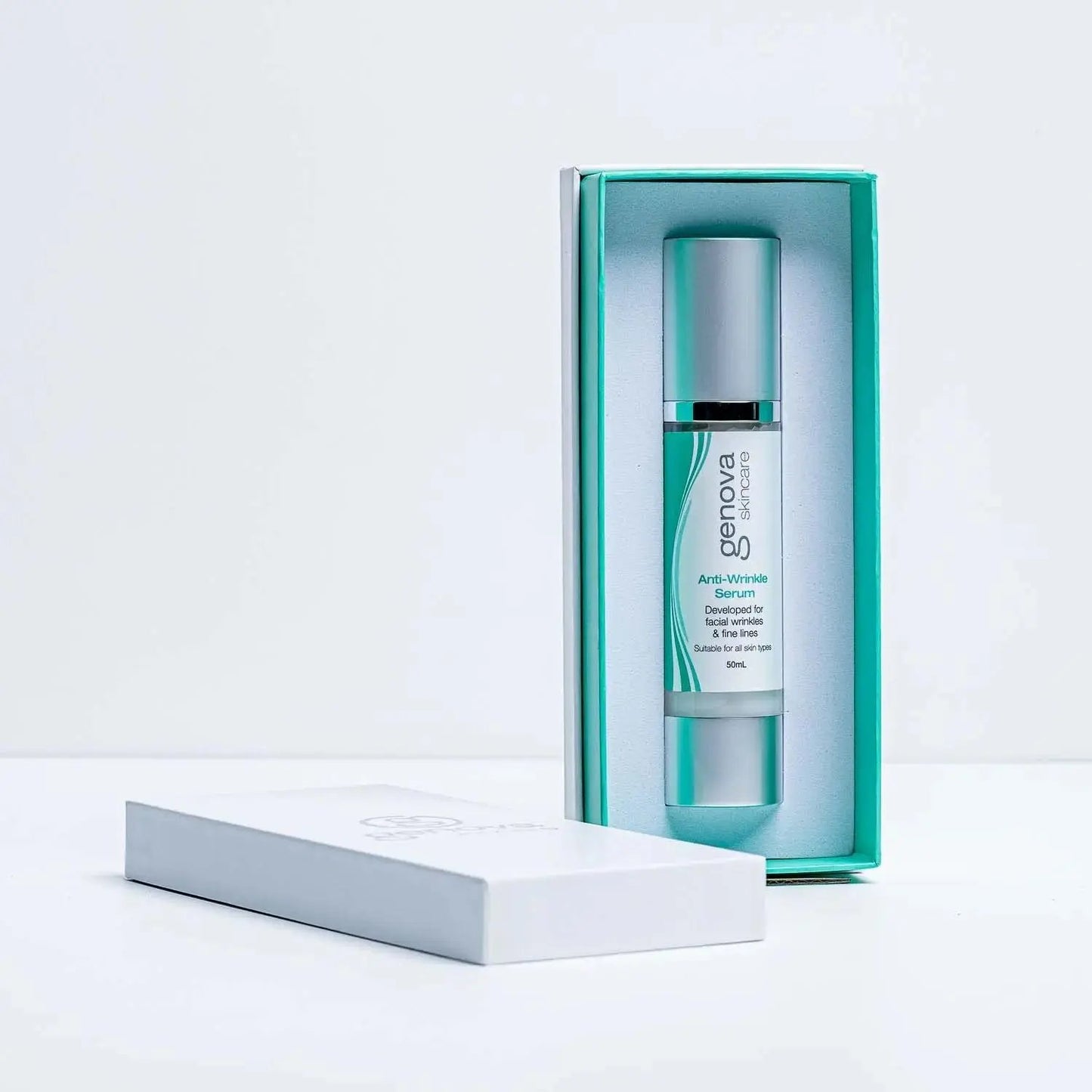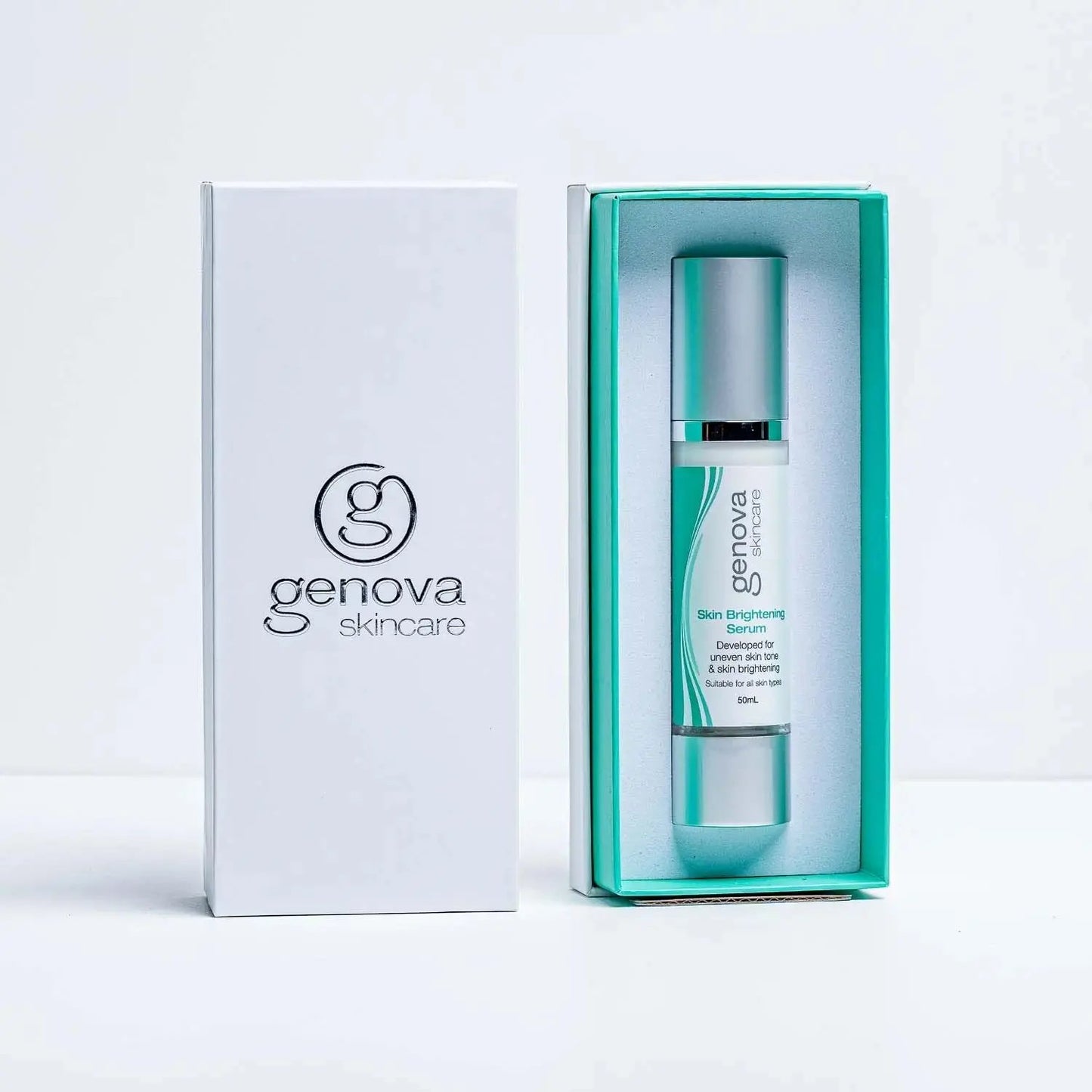Neck and Décolletage Care: Preventing and Treating Crepey Skin After Menopause
Have you ever caught a glimpse of yourself in a mirror and wondered when your neck started to look different from the rest of you? Or perhaps you’ve noticed the skin on your chest appears more creased and papery than it once did? If so, you’re experiencing one of the most common yet under-addressed skin changes that accompany menopause.
The neck and décolletage areas often reveal the first visible signs of menopausal skin changes, with many women noticing increased crepiness, horizontal neck bands, and deeper chest wrinkles seemingly appearing overnight. What makes this particularly frustrating is how these changes can create a disconnect between your well-maintained facial appearance and the more visible signs of ageing just below.
Today, we’re exploring why the neck and décolletage are particularly vulnerable during menopause and sharing evidence-based strategies to prevent and address crepey skin in these delicate areas.
Understanding Menopausal Changes in the Neck and Décolletage
Why These Areas Age Differently After Menopause
The dramatic hormonal shifts during menopause create unique challenges for the neck and chest. Estrogen is crucial in maintaining skin thickness, elasticity, and moisture retention. As levels decline, several significant changes occur:
Collagen production decreases by up to 30% in the first five years after menopause, with a continued loss of approximately 2.1% annually thereafter. This collagen decline affects the neck and décolletage more severely than other areas because the skin here is naturally thinner—only about 3.5mm thick compared to the facial skin at 5-6mm.
Skin elasticity diminishes as elastin fibres fragment and lose their ability to bounce back. This is particularly noticeable in the neck, which constantly moves throughout the day and experiences repeated stretching. The loss of supporting fat tissue underneath the skin further compounds this issue, resulting in the characteristic crepey appearance and horizontal necklines.
Oil production decreases significantly, leading to chronic dryness and compromised barrier function. This is especially problematic for the décolletage, which has approximately 50% fewer oil glands than facial skin, making it naturally more prone to dehydration.
The Impact of Sun Damage and Lifestyle Factors
While hormonal changes create the foundation for crepey skin, sun exposure is a powerful accelerant. The neck and décolletage receive significant cumulative sun exposure throughout our lives, yet these areas are frequently overlooked during sunscreen application.
Research shows that up to 80% of visible ageing in these areas is directly attributable to UV damage. The Australian climate, with its high UV index, makes this particularly relevant for women in our country, who often show more pronounced photo-ageing in these areas compared to women in other regions.
Postural habits also influence neck ageing. “Tech neck”—the repeated downward gaze at phones and devices—creates persistent creases that eventually become permanent. Sleep position contributes as well, with side and stomach sleeping creating compression lines that, over time, remain visible even when standing.
Essential Strategies for Preventing Crepey Skin
Dedicated Sun Protection
The single most effective preventive measure for maintaining youthful neck and décolletage skin is consistent, thorough sun protection:
Apply broad-spectrum SPF 50+ sunscreen to your neck and chest every morning as automatically as you apply it to your face. Extend application to include the sides and back of the neck, which are often forgotten yet receive significant sun exposure. Reapply throughout the day when outdoors, even on cloudy days or during winter months.
Physical protection offers additional benefits beyond sunscreen. Consider high-necked UPF-rated clothing for extended outdoor activities. Wide-brimmed hats that shade face and décolletage provide excellent protection during Australian summers.

Postural Awareness and Sleep Positioning
Simple adjustments to daily habits can significantly reduce mechanical stress on neck and chest skin:
Maintain awareness of your head position throughout the day, especially when using electronic devices. Hold phones and tablets at eye level rather than looking down to reduce neck creasing. Consider ergonomic setups for home and office workspaces to promote healthy neck alignment.
Adapt your sleep position to minimise compression of the décolletage. Back sleeping eliminates pressure on the chest. If you’re a dedicated side sleeper, consider using specially designed pillows that reduce chest compression or silk pillowcases that create less friction against delicate skin.
Preventive Skincare Ingredients
Certain ingredients have proven particularly effective for preventing crepey skin when incorporated into your routine before significant changes appear:
Peptides signal your skin to produce more collagen and elastin, helping maintain the supportive structure that keeps skin firm. Regular use can significantly slow the development of creepiness, especially when started during perimenopause.
Antioxidants like vitamin C neutralise free radical damage and support collagen synthesis. Research shows that consistent application of vitamin C to the neck and chest can reduce visible signs of photo-ageing while protecting against further damage.
Ceramides strengthen the skin barrier, reducing moisture loss and increasing resilience against environmental stressors. This is particularly important for the naturally drier décolletage area, where barrier compromise happens more readily during menopause.

Treating Existing Crepey Skin After Menopause
Intensive Hydration Approaches
Addressing moisture deficiency is fundamental for improving the appearance of existing crepey skin:
Layer hydrating products rather than relying on a single heavy cream. Start with a hydrating serum containing multiple molecular weights of hyaluronic acid to draw moisture to different skin layers. Follow with an emollient moisturiser to seal in hydration and support the skin barrier.
Consider overnight treatments that work while you sleep. Moisture masks specifically designed for the neck and décolletage can provide intensive rehydration, with studies showing visible improvement in skin texture after just a few applications.
Maintain consistent hydration from within by ensuring adequate water intake. Research indicates proper hydration significantly improves skin elasticity measurements, particularly in mature skin showing creepiness.
Active Ingredients for Restoration
Several evidence-backed ingredients can help improve existing crepey texture:
Retinoids increase cellular turnover and stimulate collagen production. For the sensitive neck and chest areas, start with gentle formulations (like retinaldehyde or retinyl esters) used 1-2 times weekly, gradually increasing frequency as tolerance builds.
Alpha hydroxy acids (mainly lactic acid) gently exfoliate while drawing moisture to the skin. Regular use can significantly improve texture and luminosity in menopausal skin without causing the irritation sometimes associated with more potent exfoliants.
Growth factors and cytokines support the skin’s natural repair processes, helping to improve density and firmness over time. These ingredients are particularly valuable for post-menopausal skin needing diminished regenerative capacity support.
Professional Treatments Worth Considering
For more significant creepiness, in-office treatments can provide more dramatic improvement:
Microneedling stimulates collagen production through controlled micro-injuries. Studies have shown up to 45% improvement in neck skin laxity after several treatments. The neck and décolletage respond particularly well to this approach.
Non-ablative laser treatments target deeper skin layers without damaging the surface. They stimulate collagen remodelling while addressing pigmentation issues common in the décolletage. For optimal results, a series of 3-6 treatments is recommended.
Ultrasound and radiofrequency devices deliver energy to deeper tissue layers, creating immediate contraction and long-term collagen stimulation. These can effectively address the horizontal bands that develop on the neck after menopause.

Creating Your Neck and Décolletage Care Routine
Morning Routine
Start with gentle cleansing using the same mild cleanser you use for your face, avoiding harsh soaps that can further dry delicate skin. Apply a vitamin C serum to protect against oxidative damage throughout the day while brightening and supporting collagen.
Follow with a hydrating serum containing hyaluronic acid and peptides, applied upward from chest to jawline. Finish with a dedicated neck cream or your facial moisturiser extended downward, and always apply broad-spectrum SPF 50+ as your final step.
Evening Routine
Remove all makeup and sunscreen with gentle cleansing, being careful not to tug or pull at the delicate neck skin. Apply treatment products like retinol (1-3 times weekly) or a peptide serum (on non-retinol nights) from the chest upward to avoid product accumulation in neck creases.
Finish with a richer moisturiser than you might use during the day, focusing on barrier repair ingredients like ceramides and fatty acids. Once or twice weekly, apply an overnight mask specifically formulated for the neck and décolletage to provide intensive restoration.
Weekly Treatments
Incorporate gentle exfoliation 1-2 times weekly to remove dull surface cells and enhance product penetration. Opt for chemical exfoliants (like lactic acid) rather than physical scrubs, which can be too abrasive for the thin skin in these areas.
Consider a weekly neck and décolletage massage using facial oil to stimulate circulation and lymphatic drainage while providing slip for massage movements. Using upward motions helps counteract the downward pull of gravity on these areas.
Quick Tips for Immediate Improvement
- For temporary tightening: Apply a caffeine-based serum to the neck before special occasions for a mild tightening effect lasting several hours.
- For chest wrinkles: Apply silicone chest pads overnight to prevent and reduce sleep-induced creases. Many women see improvement after just a few nights of use.
- For uneven pigmentation: Use niacinamide and alpha arbutin products, which address discolouration without the irritation potential of hydroquinone.
- To enhance results, apply skincare products immediately after showering when the skin is slightly damp to maximise absorption.
- For makeup application: Extend foundation somewhat onto the upper neck to create a seamless transition, but avoid heavy makeup on the neck and chest, which can accentuate creases.
Embracing Your Journey with Confidence
While perfect, crease-free skin isn’t realistic at any age, a well-cared-for neck and décolletage can remain smooth, even-toned, and resilient throughout your menopausal journey and beyond. Many women find that dedicating just a few extra minutes to these areas creates a more harmonious, youthful appearance that allows them to feel confident in the broader range of necklines and styles.
Remember that caring for your neck and décolletage isn’t about meeting impossible standards of ageless perfection but nurturing the skin that carries you through life. The changes that come with menopause are a natural part of womanhood—one that can be navigated with grace, knowledge, and effective care strategies.
What neck and décolletage care aspects have you found most challenging during or after menopause? Share your experiences in the comments below—our community of Australian women navigating similar changes has wisdom to share.








